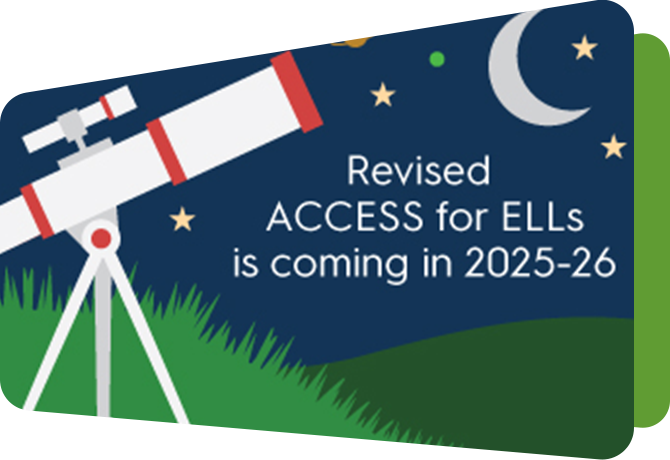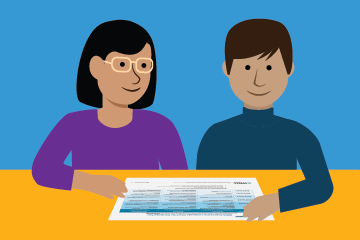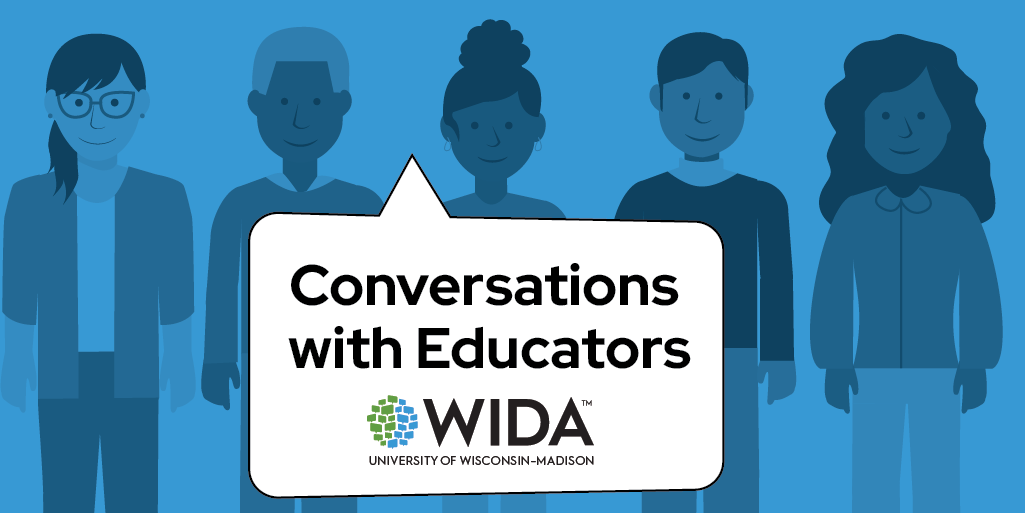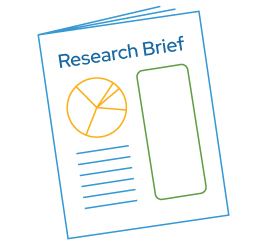Caroline E. Parker and Laurene L. Christensen
September 2018
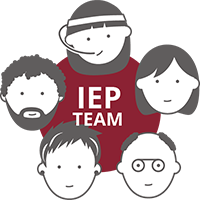 English learners who have significant cognitive disabilities are a small but important subgroup of students in U.S. schools. These students may have language- and disability-related needs that teams of educators and family members should address when developing those students’ Individualized Education Programs (IEPs). Identifying the appropriate instructional supports for English learners with significant cognitive disabilities can be challenging. This brief highlights some key elements to remember, including the importance of the student’s home language in identification, assessment, and instruction, and the need to build cultural responsiveness among all educators. Educators and family members who participate in IEP meetings for English learners with significant cognitive disabilities can use this brief to plan for quality meetings and successful school experiences for their students and children.
English learners who have significant cognitive disabilities are a small but important subgroup of students in U.S. schools. These students may have language- and disability-related needs that teams of educators and family members should address when developing those students’ Individualized Education Programs (IEPs). Identifying the appropriate instructional supports for English learners with significant cognitive disabilities can be challenging. This brief highlights some key elements to remember, including the importance of the student’s home language in identification, assessment, and instruction, and the need to build cultural responsiveness among all educators. Educators and family members who participate in IEP meetings for English learners with significant cognitive disabilities can use this brief to plan for quality meetings and successful school experiences for their students and children.
Who are English Learners With Significant Cognitive Disabilities?
Currently, there is no established definition of English learners with significant cognitive disabilities at the federal or state level. Christensen, Gholson, and Shyyan (2018) have drawn upon the federal definition of English learner and state-level definitions of students with significant cognitive disabilities to establish this working definition of English learners with significant cognitive disabilities: English learners with significant cognitive disabilities are individuals who have one or more disabilities that significantly limit their intellectual functioning and adaptive behavior as documented in their Individualized Education Programs (IEP), and who are progressing toward English language proficiency in speaking, reading, writing, and understanding.
Considerations When Developing IEPs for English Learners With Significant Cognitive Disabilities
The U.S. Individuals with Disabilities Act requires that all students with disabilities have IEPs to ensure they have available a free, appropriate public education “that emphasizes special education and related services designed to meet their unique needs and prepare them for further education, employment and independent living.” The IEP team includes family members, the classroom teacher, a special education teacher, a person who can interpret evaluation results, a representative of the school system, a person with special expertise related to the student, and the student themself. Many resources are available to help family members and educators develop IEPs that will help to provide high quality, accessible instructional experiences for students with disabilities, and there is extensive literature that describes best practices for providing high quality language and content instruction to English learners. More recently, there have been efforts to provide resources for educators who work with dually identified students who are English learners and have disabilities, but there are very few resources to help educators address the unique needs of English learners with significant cognitive disabilities.
One way of thinking about IEP development for English learners with significant cognitive disabilities is to think about the multiple educator skills that need to be represented on the IEP team: general education, special education, and English language development. In addition, to work with an English learner with any type of disability, all educators need to understand cultural diversity, appreciate the role of home language use, and recognize the need for collaborating across educational settings. The development of IEPs for English learners with significant cognitive disabilities calls for additional considerations such as learning about different cultural perspectives on significant disability, and including both the home language and English in IEPs, especially for students who may not have verbal communication skills.
Use culturally and linguistically responsive strategies when developing IEPs for students with significant cognitive disabilities. Educators need to reflect regularly on their cultural responsiveness as they work with students from diverse backgrounds. Building skills in cultural responsiveness begins with self-examination about assumptions one brings to to one’s work and requires understanding that each person brings their own cultural background to an IEP meeting. Self-awareness that the dominant school culture is not “better than other cultures” allows educators to get to know the student’s family without judgment.
All educators attending IEP meetings should be familiar with culturally and linguistically responsive strategies. It is not solely the responsibility of the English language teacher to understand the family culture, know the family’s language requirements for the meeting, and communicate with the family.
Educators can use specific practices before, during, and after IEP meetings to be responsive to different cultural and linguistic backgrounds. Some of these practices, such as providing interpreters for families who do not speak English, are also federal requirements. Other practices for educators include:
- Learn about the family’s language preferences and set up a communication format that facilitates full participation by all family members.
- Avoid jargon in writing and speaking. Be sure to spell out and explain acronyms.
- Ask families about the best times to schedule meetings and be flexible with meeting times if possible.
- Prepare translations of all documents and provide them to families before IEP meetings so they can review them and prepare for the meeting.
- Make sure that families understand that they have the right and opportunity to advocate for their children in IEP meetings. Go through the parental rights documents with them.
- Provide an interpreter for the IEP meeting and plan for the extra time needed.
- Ask families to describe their children in the home context. Youth with significant cognitive disabilities participate in families and communities in multiple ways that can vary by cultural background. Inviting families to share their perspectives builds trust and can help educators see the assets that families and students bring to the IEP meetings.
- Identify student strengths and bring examples of student work so families can see student progress.
- Clearly describe the plan for language learning—both English and home language—including who will be working with the student and in what settings.
- Demonstrate care about the student as a person.
- For students with post-secondary transition plans (beginning at age 14 or 16, depending on the state), clarify the language(s) they will use after high school. Note whether they will need to maintain and use their home languages.
A Working Definition of Culture
Culture is more than ethnicity—it includes gender, region, religion, sexual orientation, and disability. The United Nations Educational, Scientific and Cultural Organization (2001) defines culture in a broad sense as “the set of distinctive spiritual, material, intellectual and emotional features of society or a social group. … [I]t encompasses, in addition to art and literature, lifestyles, ways of living together, value systems, traditions and beliefs.” The Alternate English Language Learning Assessment (ALTELLA) project supports this definition.
Identify present levels of academic achievement and measurable annual goals in home language and English. For English learners with significant cognitive disabilities, educators should collect information about students’ levels in the home language and English, as well as sign language, if relevant, and any communication devices the students use. Families can be key informants in this area, particularly for students who are nonverbal. When identifying present levels and goals, IEP team members should consider the “least dangerous assumption” (Jorgensen, 2005) about student capacity; that is, by assuming the highest possible student capacity, students will be exposed to the most rigorous possible curriculum and potential outcomes. English learners with significant cognitive disabilities may actually have capacities in the home language that are going untapped at school. Once the present levels in each/all language(s) are described, the IEP team can then determine the appropriate language of instruction to provide the student with access to content and English language instruction, recognizing that it may be challenging to find appropriate resources for students with significant cognitive disabilities who need instruction in a low-incidence language.
All English learners with significant cognitive disabilities should have IEP goals that address their English language development and strategies to meet those goals. By including a goal that explicitly focuses on English language development, an English learner with significant cognitive disabilities will receive appropriate instruction to help them communicate in English.
Collaborate before, during, and after IEP meeting, and include service provision that accounts for both special education and English language development instruction. To meet the needs of English learners with significant cognitive disabilities, all providers must communicate and collaborate before, during, and after the IEP meeting. The IEP team should jointly consider the needs of the student for each component of the IEP, with each person contributing their expertise. This collaboration increases the likelihood that educators and family members will develop an instructional program that is challenging and appropriate. For English learners with significant cognitive disabilities, an English language expert familiar with the student’s specific needs must be part of that student’s IEP team.
The IEP should articulate the special education and English language development services to be provided. Special education does not “trump” English language services; rather, the school must provide both services to students as needed to meet their goals. The IEP team must coordinate special education and English language development services to provide students with a coherent experience. The team must determine needed services based on student needs, not on available resources, and when decisions have to be made in the context of limited resources, members should identify which educator, setting, and instructional strategies school staff will provide to meet each IEP goal, including the English language IEP goal. Finally, team members must collaborate, collaborate, collaborate!
Federal Regulations about IEPs and Assessment for English Learners
(a) Development of IEP—…
(2) Consideration of special factors. The IEP Team must—…
(ii) In the case of a child with limited English proficiency, consider the language needs of the child as those needs relate to the child’s IEP (Development, review, and revision of IEP, 2007)
(c) Other evaluation procedures. Each public agency must ensure that—
(1) Assessments and other evaluation materials used to assess a child under this part
(i) Are selected and administered so as not to be discriminatory on a racial or cultural basis;
(ii) Are provided and administered in the child’s native language or other mode of communication and in the form most likely to yield accurate information on what the child knows and can do academically, developmentally, and functionally, unless it is clearly not feasible to so provide or administer (Evaluation procedures, 2007)
What Should Each IEP Component Include for English Learners With Significant Cognitive Disabilities?
IEP development is guided by the U.S. Individuals with Disabilities Act, and all IEPs need to include the same components, though how IEPs look varies from state to state. The regulations are in place to guarantee each student will receive high quality instruction in the least restrictive learning environment. English learners with significant cognitive disabilities can benefit from IEP team members considering the students’ needs for each IEP component and ensuring the students receive high quality instruction that enables them to show what they know and can do. Refer to Considerations for IEP Teams.
Questions to Consider During IEP Development
When developing an IEP for an English learner with significant cognitive disabilities, answering the questions below may help ensure the IEP is developed in a culturally responsive fashion, that students’ language needs (in the home language and English) are addressed, that services are provided in the most appropriate setting by the appropriate educator, and that all elements of the IEP are addressed.
Cultural Responsiveness
- Has each person who will attend the IEP meeting been trained in cultural responsiveness and encouraged to consider the role of cultural responsiveness in successful IEP meetings?
- Have materials (translated if needed) been provided to family members before the IEP meeting with an agenda of the meeting?
- Has an interpreter been provided if needed for family members and/or the student at the IEP meeting?
- Has the IEP team spoken with family members to identify student’s present levels of performance as evidenced at home?
- Has the IEP team reflected on how the student’s cultural background and home experiences can be leveraged to meet the IEP goals?
Language
- What language does the student speak at home?
- Does the IEP identify and take advantage of student's present levels in the home language?
- Does the IEP identify what language to use for content instruction?
- Does the IEP include a goal directly or indirectly related to English language acquisition?
- Does the IEP include a goal directly or indirectly related to performance in the home language?
- Does the transition plan account for the language(s) the student will need to use in the planned postsecondary setting?
Provision of Services and Collaboration
How will teachers coordinate instruction and services to implement the IEP and provide the student with coherent and appropriate instruction?
References
Christensen, L. L., Gholson, M. L., & Shyyan, V. V. (2018, April). Establishing a definition of English learners with significant cognitive disabilities. University of Wisconsin–Madison, Wisconsin Center for Education Research, Alternate English Language Learning Assessment project.
Development, review, and revision of IEP, 34 C.F.R. § 300.324 (2007) Evaluation procedures, 34 C.F.R. § 300.304 (2007)
Jorgensen, C. (2005). The least dangerous assumption: A challenge to create a new paradigm. Disability Solutions (A publication of Creating Solutions, a resource for families and others interested in Down syndrome and developmental disabilities), 6(3), 1, 5–9, 15.
Additional Resources
Hoover, J. J., & Patton, J. R. (2017). IEPs for ELs: And other diverse learners. Thousand Oaks, CA: Corwin.
Kangas, S. (2018). Why working apart doesn’t work at all: Special education and English learner teacher collaborations. Intervention in School and Clinic, 54(1), 31–39. doi:10.1177/1053451218762469
Lhamon, C. E. & Gupta, V. (2015, January 7). Dear colleague letter: English learner students and limited English proficient parents [Memo]. U.S. Department of Justice.
National Academies of Sciences, Engineering, and Medicine. (2017). Promoting the educational success of children and youth learning English: promising futures. Washington, DC: The National Academies Press.
Rossetti, Z., Sauer, J. S., Bui, O., & Ou, S. (2017). Developing collaborative partnerships with culturally and linguistically diverse families during the IEP process. Teaching Exceptional Children, 49, 328–338. doi: 10.1177/0040059916680103
Tran, L. M., Patton, J. R., & Brohamme, M. (2018). Preparing educators for developing culturally and linguistically responsive IEPs. Teacher Education & Special Education, 41(3), 229–242. doi:10.1177/0888406418772079

